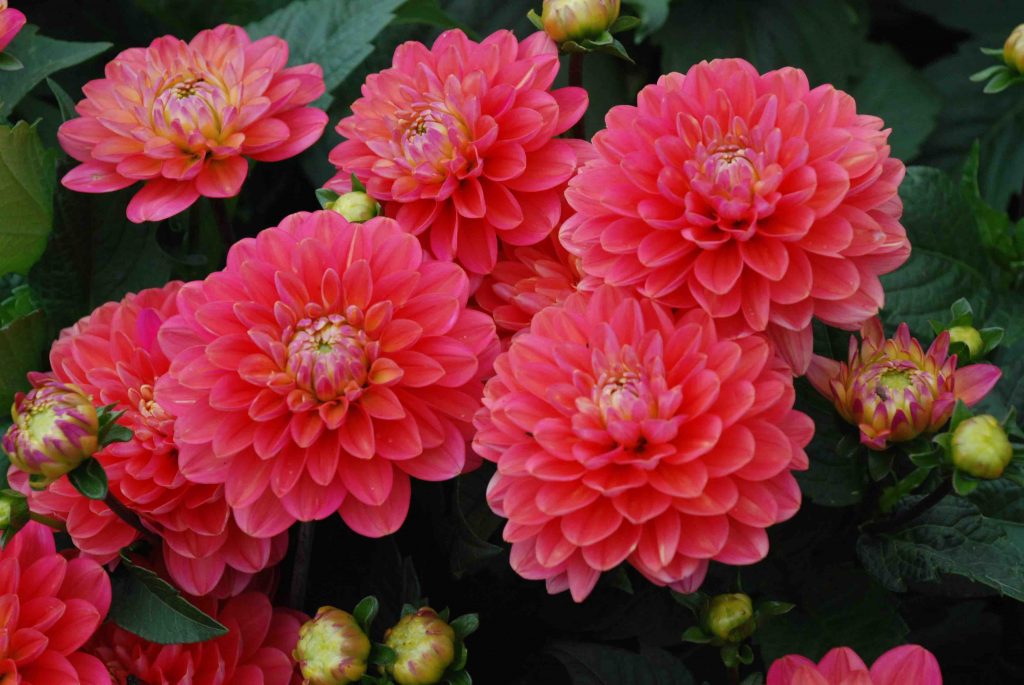
We have ‘enjoyed’ an exceptionally mild autumn and I have been slow in protecting some of my tender plants. A few were lifted and prepared for winter a while ago but the mild weather in recent weeks has made me complacent. There were dahlias in flower, though looking tatty, and it can be confusing to know what to do with ‘tender’ plants. But frosts are with us now and we need to take action.
Most popular garden plants cannot survive being frozen. But things are not that simple. If plants are protected under the soil surface they usually avoid actually being frozen. Soil moisture is important too and plants are more likely to survive in sandy, well-drained soil than in wet, clay soils. Protection, at the base of south-facing walls, urban heat and mild, coastal areas all make a difference. Growing plants in pots allows them to be moved to protection in winter but, if let outside, frost can penetrate the compost in pots more than if the plants were in the soil, so growing in pots can actually increase the chances of loss through winter cold. And the pots can crack if the compost freezes.
So the advice below is not 100% perfect because there are lots of variables. But it is a guide.
Dahlias
(top photo)
Whether grown from tubers or from seed, all dahlias produce tubers that can be kept to grow the next year. Frost kills the top growth but the tubers will survive – if they are not frozen. New shoots in spring come from the base of the old stems and not the actual tubers below. Traditional advice is to lift the tubers, once the tops are frosted, cut them back to about 10cm and store the dry tubers somewhere free of frost. I leave them in shallow boxes so I can check them regularly but you can cover them in dry compost or wrap them in newspaper.
In some areas they can be left in the ground and they will survive. The problem is that they can be eaten by slugs and snails and you cannot divide the clumps. If you have them in pots you can store them in the pot, if kept dry, in a shed. But they will need to be repotted into fresh compost in spring.
Cannas
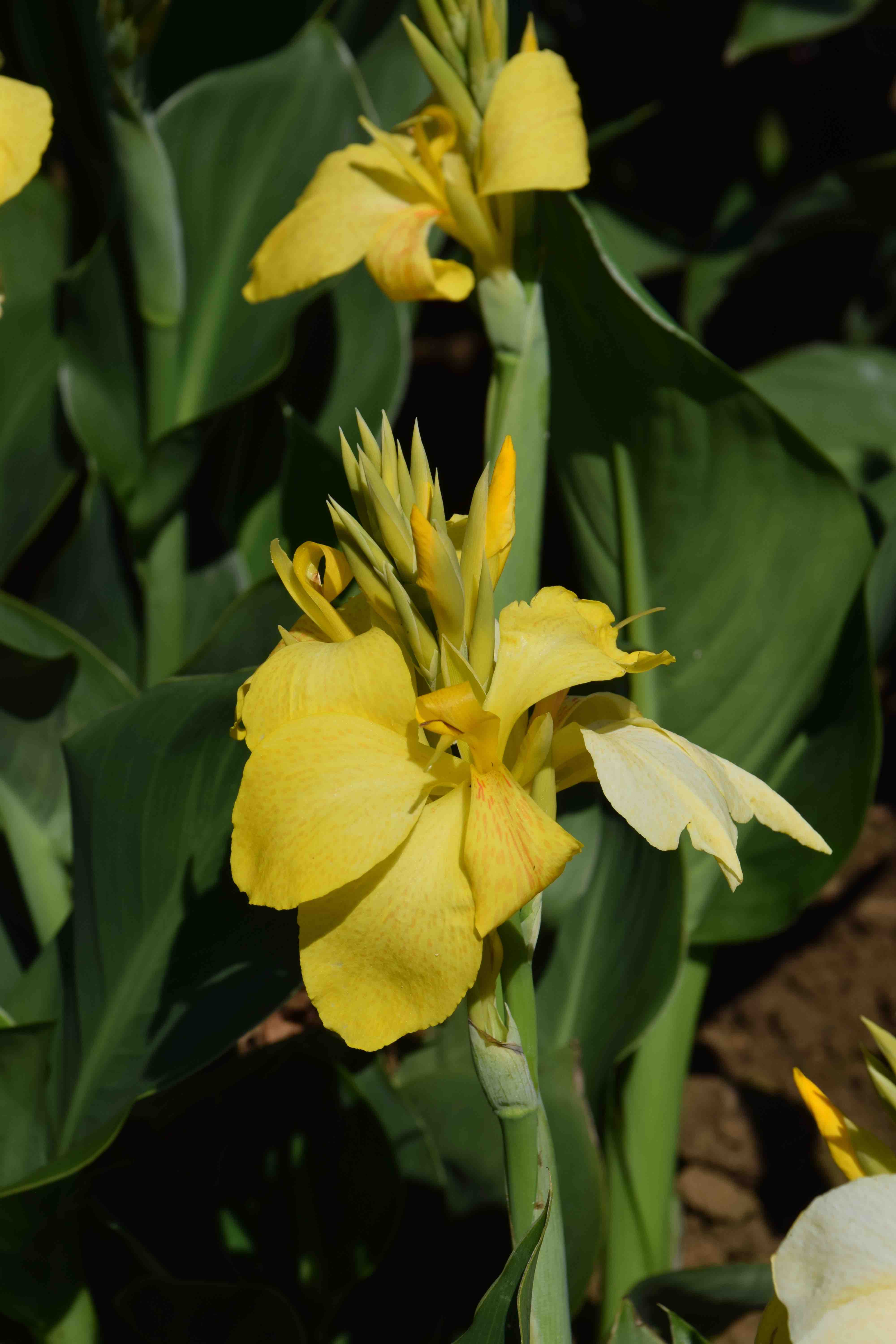
Cannas need similar treatment to dahlias. They grow from thick rhizomes (fleshy underground stems). In mild areas they can survive outside so they ‘can’ be left in the ground in some gardens, especially if heavily mulched with compost or leaf mould. The problem with this is that they then come into growth very late in spring and they may not reach maturity, and bloom, until late in summer. So it is best to lift them and protect them over winter.
Lift them carefully, to avoid breaking the rhizomes. Any ‘stems’ that have bloomed will naturally die so cut them off at the base. Shake off the soil and allow them to dry out and keep in a frost-free place. They can then be started into growth again in March. If you have a light place that is free of frost it is better to pot the lifted plants, keep them just moist over winter and keep them just ‘ticking over’ all winter. This means you can split and repot them in spring and they will burst into growth more rapidly than if completely dried.
Arum lilies (zantedeschia)
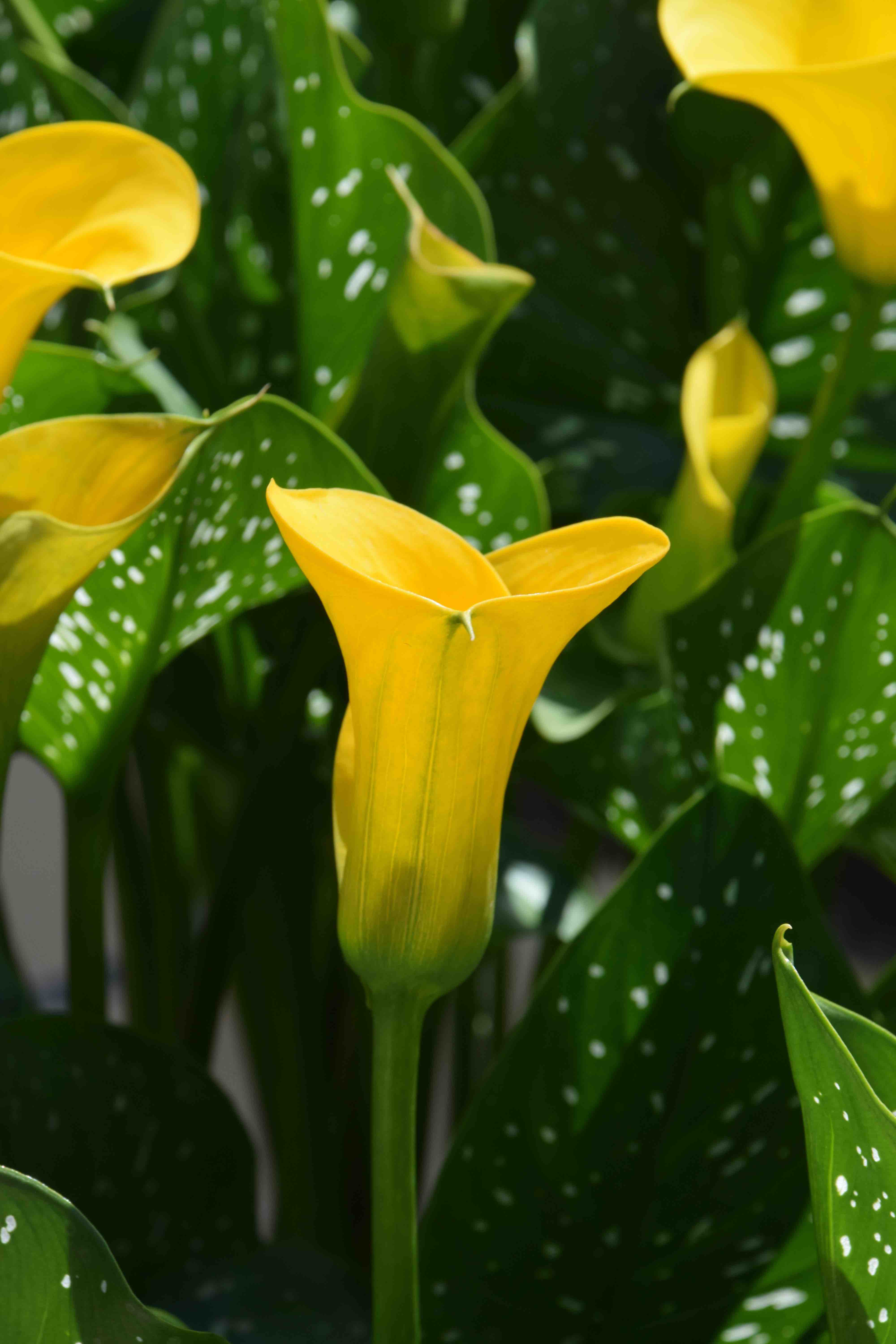
The coloured arum lilies are very popular but are not hardy. Having said that, I have had them survive outside in sheltered spots – but it is risky. It is best to store the pots they were grown in, dry, in a frost free place and repot them in spring. The larger, white Zantedeschia aethiopica is generally hardy.
Eucomis (pineapple lily)
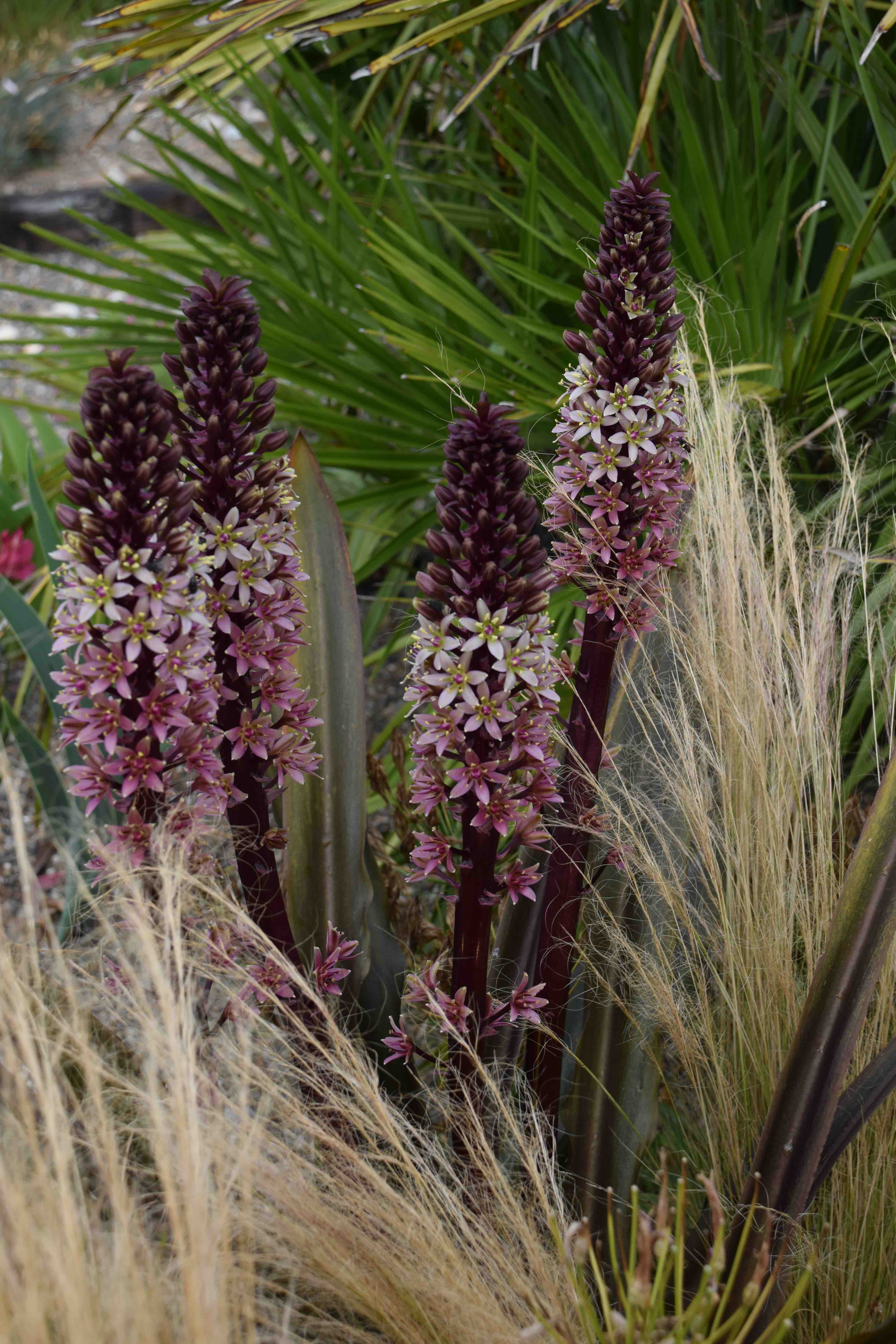
Pineapple lilies are becoming very popular and they are generally quite hardy. If the bulbs were originally planted about 10cm deep, so the bulbs are below the level that will be frosted, they can be left outside to grow and establish. If in pots, it is necessary to prevent the compost from freezing so move the pot to a shed, once they have died down, or a cool or cold greenhouse. Keep them almost completely dry. They will be better if not disturbed every year.
Gladioli
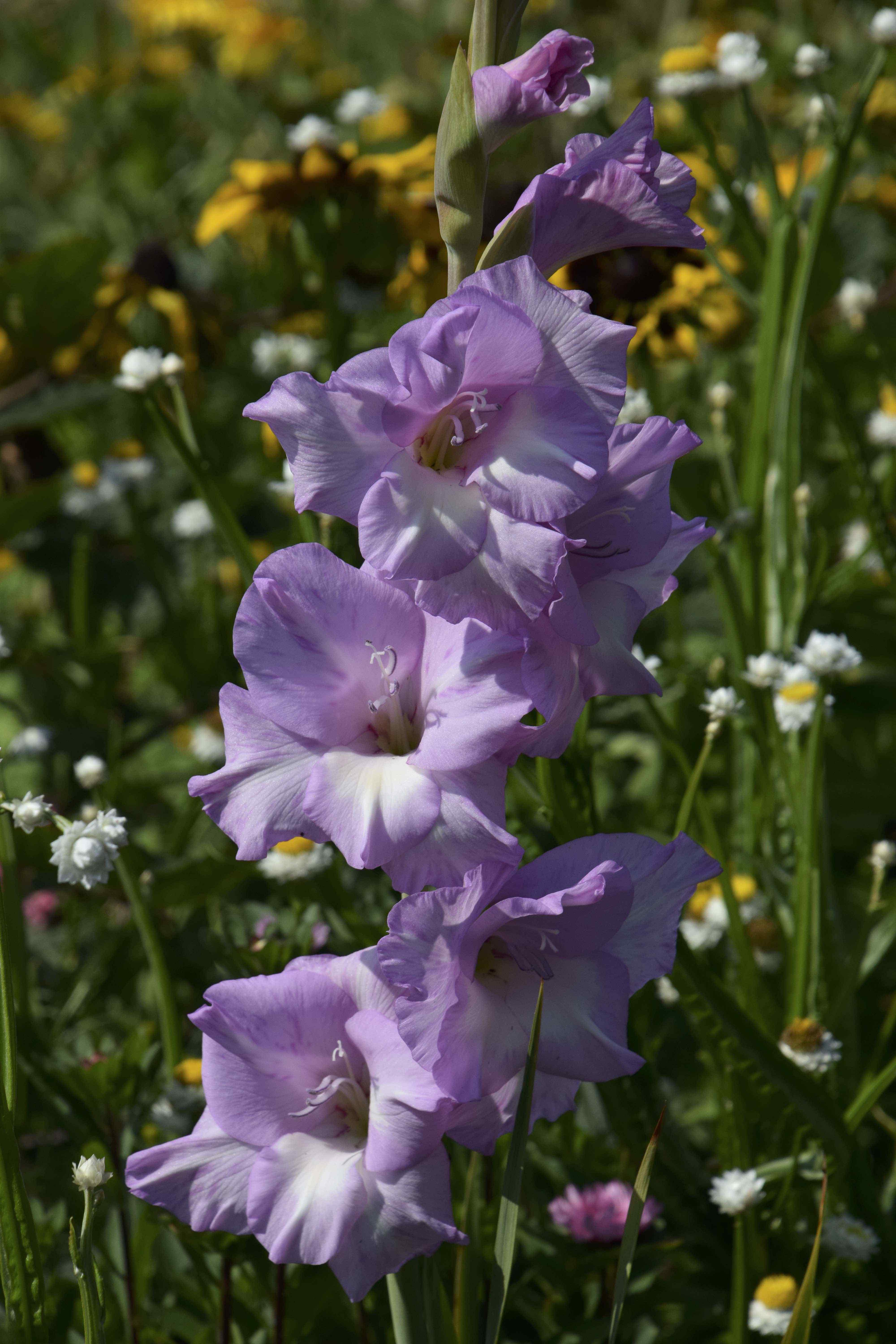
Gladioli are corms and not bulbs. The difference will seem academic until you come to lift them when you realise that corms produce a completely new structure, which we remove and save, above the old, shrivelled one you planted. Sometimes there will be two. There will also probably be lots of tiny cormlets. If you don’t lift your plants, they may die in wet, cold soils but, if they survive, the corms get crowded and you will get lots of narrow, grassy leaves from the cormlets and fewer flowers. So it is best to lift them now, cut off the old stems, keep the new, healthy corms (in a dry, frost-free place) and keep some cormlets to plant if you want to increase your stock -they will bloom in a few years.
Nerines
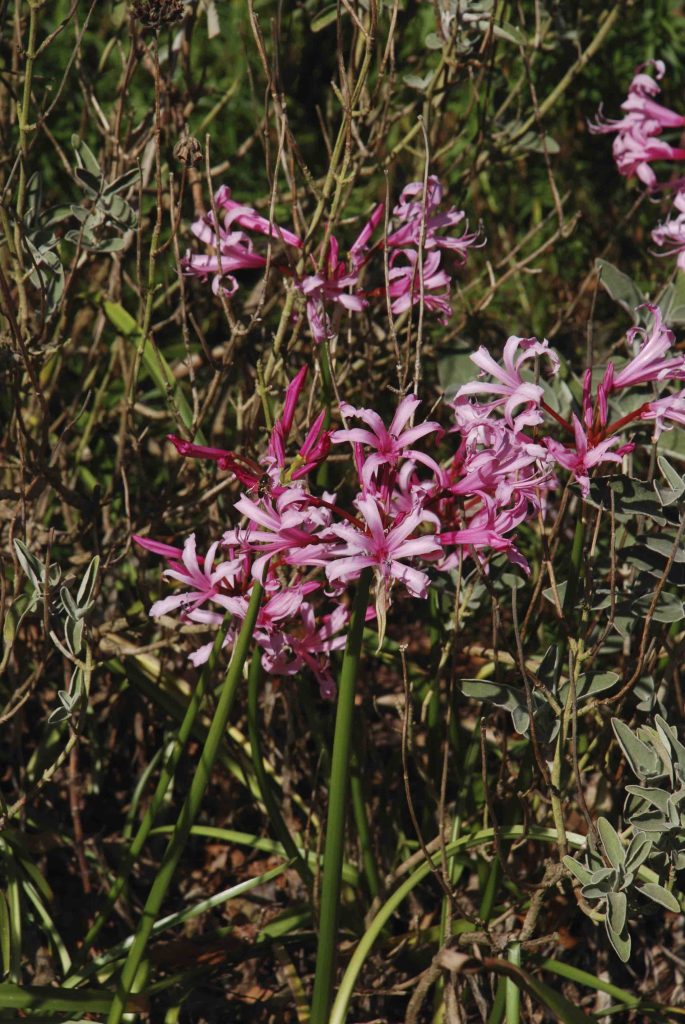
Nerines (N. bowdenii) are hardy and need to be allowed to establish and not be disturbed if they are to flower well. They often take a few years to settle down and they flower best when crowded. So leave them alone, provided they are planted in a sunny, well-drained spot.
Weekly reminders
Plant garlic and broad beans
Rake fallen leaves off lawns and make leafmould
Plant daffodils and tulips
Plant autumn pots with spring-flowering bedding and bulbs
Cut back tall roses lightly to reduce winter storm damage